Crossing perhaps gets overlooked by many these days. It is seen as a high-volume but low-efficiency way of getting the ball into the area. Discussing crossing often eludes an image of an old-school manager screaming at his winger to “stick in the box”. Yet, both Kevin De Bruyne and Trent Alexander-Arnold are rightly lauded for their ability to put a quality delivery into the box. This article won’t go into the data too much. There is a frankly excellent article on crossing in The Athletic, by Tom Worville, that makes for fascinating reading. Instead, this tactical analysis will focus on the types of crosses that teams can put into the box, showing examples from the likes of De Bruyne, Alexander-Arnold and more, along with suggesting some ways to coach these crossing methods.
Deep cross
One of the main themes of crossing is, as obvious as it sounds, locating the space in the opposition defence and using the cross to attack that as quickly and accurately as possible.
The first cross we will look at is the most traditional deep cross. If the defence is set in a deep position themselves and there are few options in the area, this is a poor cross to hit. It is too easy for an organised defence to attack, and the cross needs to be inch-perfect to find a player occupying that space. Both De Bruyne and Alexander-Arnold hit this cross with outstanding technique but their decision-making on when to hit this cross is equally impressive.
In the following image, De Bruyne receives the ball out wide and makes the cross on his second touch. Whilst the opposition defence in this example is well set, there is clear space to attack in between their position and that of the goalkeeper. De Bruyne hits this space perfectly, and City score as a result.
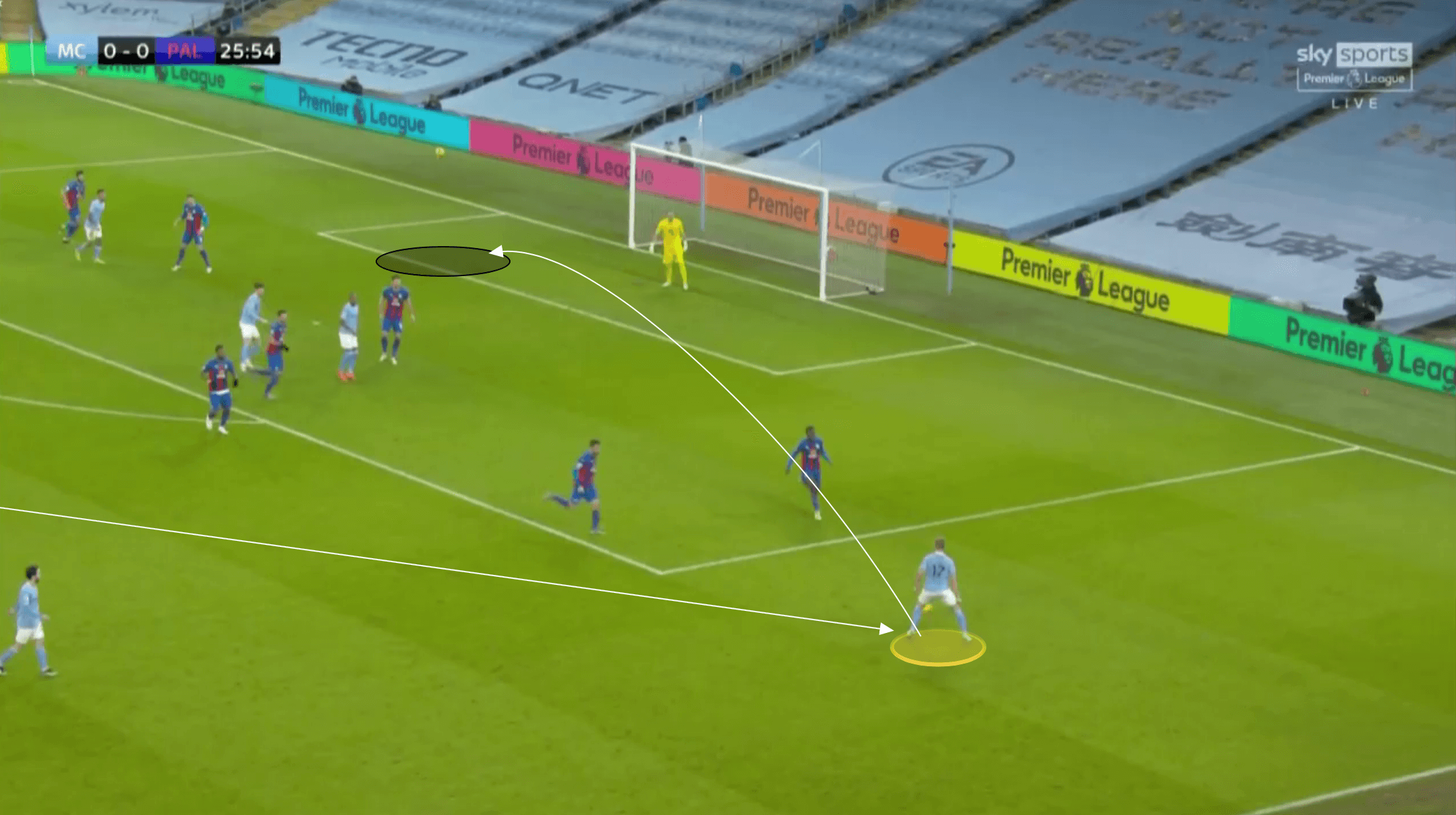
We can see a similar example but this time from a full-back, Alexander-Arnold, in the next image.
He hits this pass first-time but, once more, aims for that space behind the opposition defence and goalkeeper. Any closer than the six-yard line and the keeper will claim it comfortably. However, if the ball can be struck into the six-yard line or a touch further out at a pace where the keeper doesn’t feel comfortable coming out to claim it, then the forward has a good chance of latching onto the delivery.
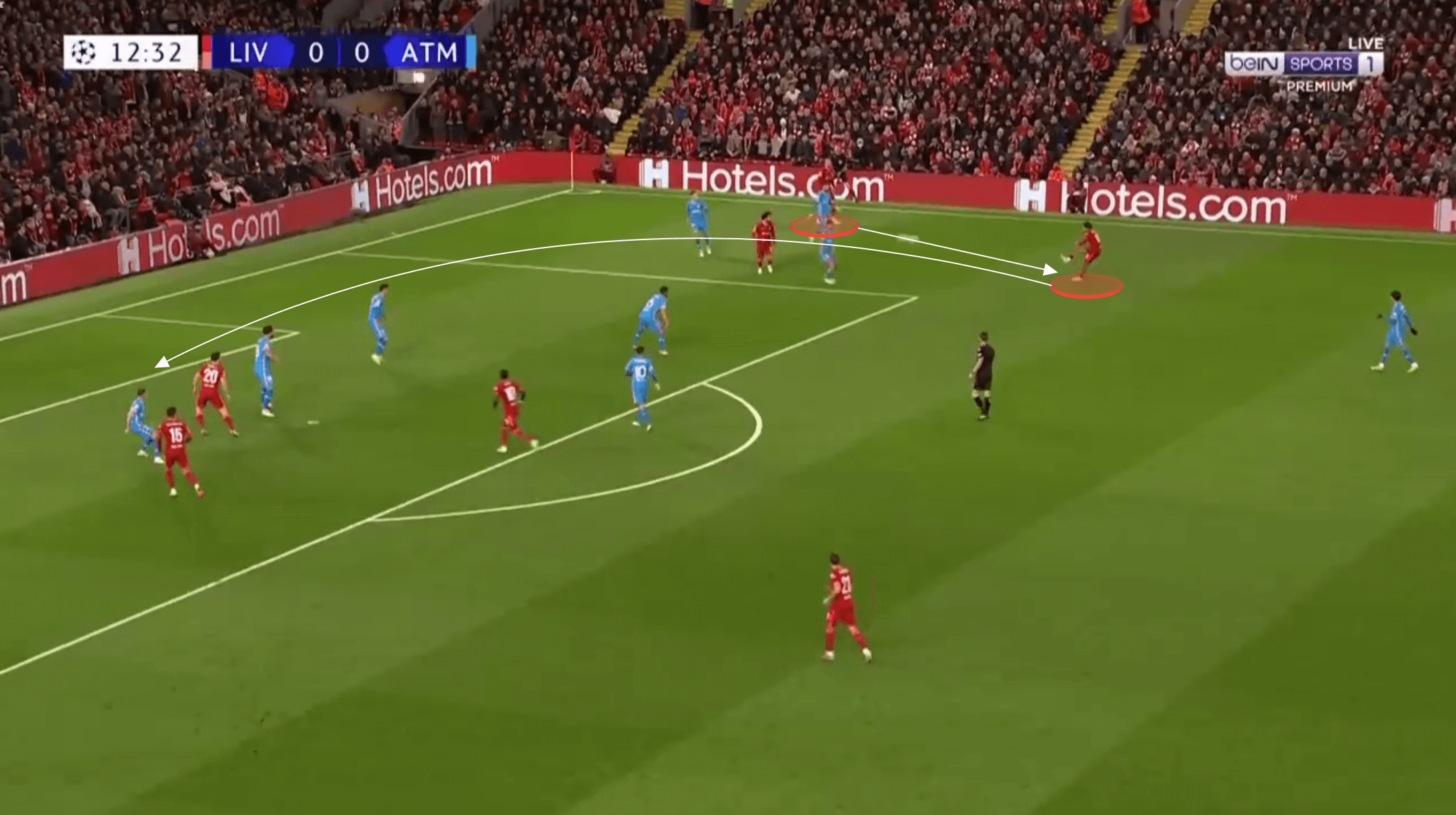
The ball must be whipped in at a low trajectory and not hung in the air where the keeper could claim it, and it needs to be behind the opposition defence. In the previous image, we can see how all the Atlético defenders are facing forward, yet Diogo Jota, the Liverpool attacker, is on the side-turn. As a result, this cross turned the Atlético defence around and was able to find Jota who was already facing their goal — giving the forward a clear advantage.
Pull-back
The second cross we’ll look at is pulling the ball back from the byline. This is a method of assist that Pep Guardiola has championed in his time with Manchester City. The cross is most effective inside the 18-yard box and hit from the byline area close to the six-yard box. An example of this is seen in the next image, where De Bruyne underlaps and is found with a through pass behind the opposition defence.
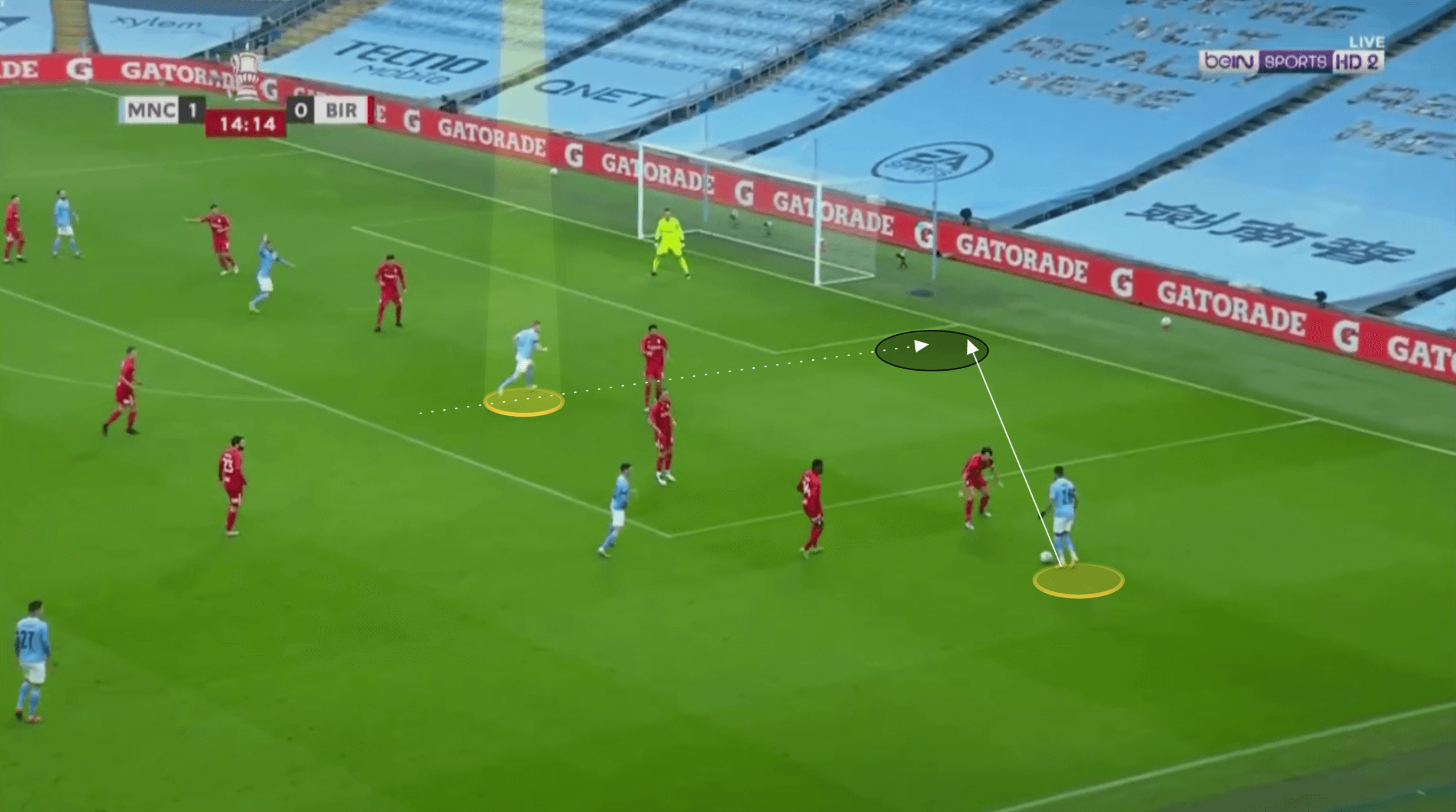
It is from this position that he pulls the ball back into that second six-yard box area, where Bernado Silva attacks and finishes from close range. Note how De Bruyne hits this pass without looking to see if Bernardo Silva has made the run, instead, instinctively delivering the ball into this area, expecting a teammate to hit this space. Bernardo Silva is only able to finish this due to the positioning of his centre-forward, Gabriel Jesus. We can see how the forward’s run drags the momentum of the opposition defenders towards their own goal and inside the six-yard box. A ball into Gabriel Jesus in this position would be far more difficult to complete than a ball into the now open second six-yard box space. Whilst not always essential, as we’ll see in the next example we look at, a run by a forward towards goal in this kind of scenario can be enough to draw the defenders towards their goal and leave this space open.
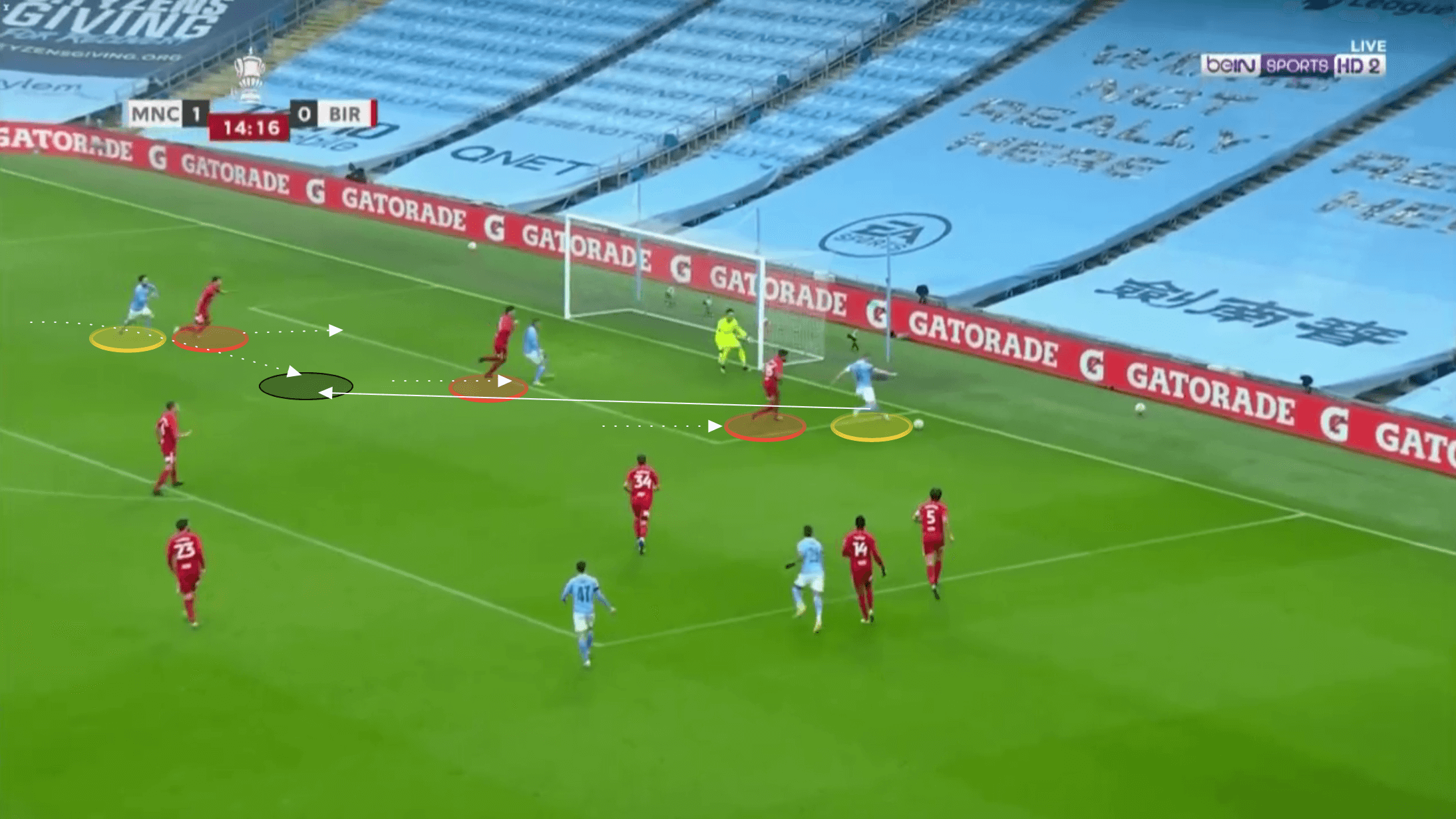
This cross is most frequently accessed by wingers making a diagonal run in behind from a wide starting position, or by a winger drawing out the opposition full-back before a central-midfielder underlaps and can be found with a through pass, as De Bruyne did in the previous example.
Erling Haaland is perhaps one of the more intelligent forwards when it comes to being found with this type of cross. He doesn’t use his run to create space for others like Gabriel Jesus did as we saw earlier, but instead, he will aim to time his run and still be found in the second six-yard box area by such a cross.
He often takes a wider starting position, starting on the furthest centre-back from the ball, and looks to make a run to hit the ball-side centre-back.
We can see this in the following image where the ball-side centre-back is looking at the ball-carrier. In doing so, they can’t see or, frankly, mark Haaland’s run towards the front post position, whilst the defender currently marking him can’t follow him effectively either, such is his pace.
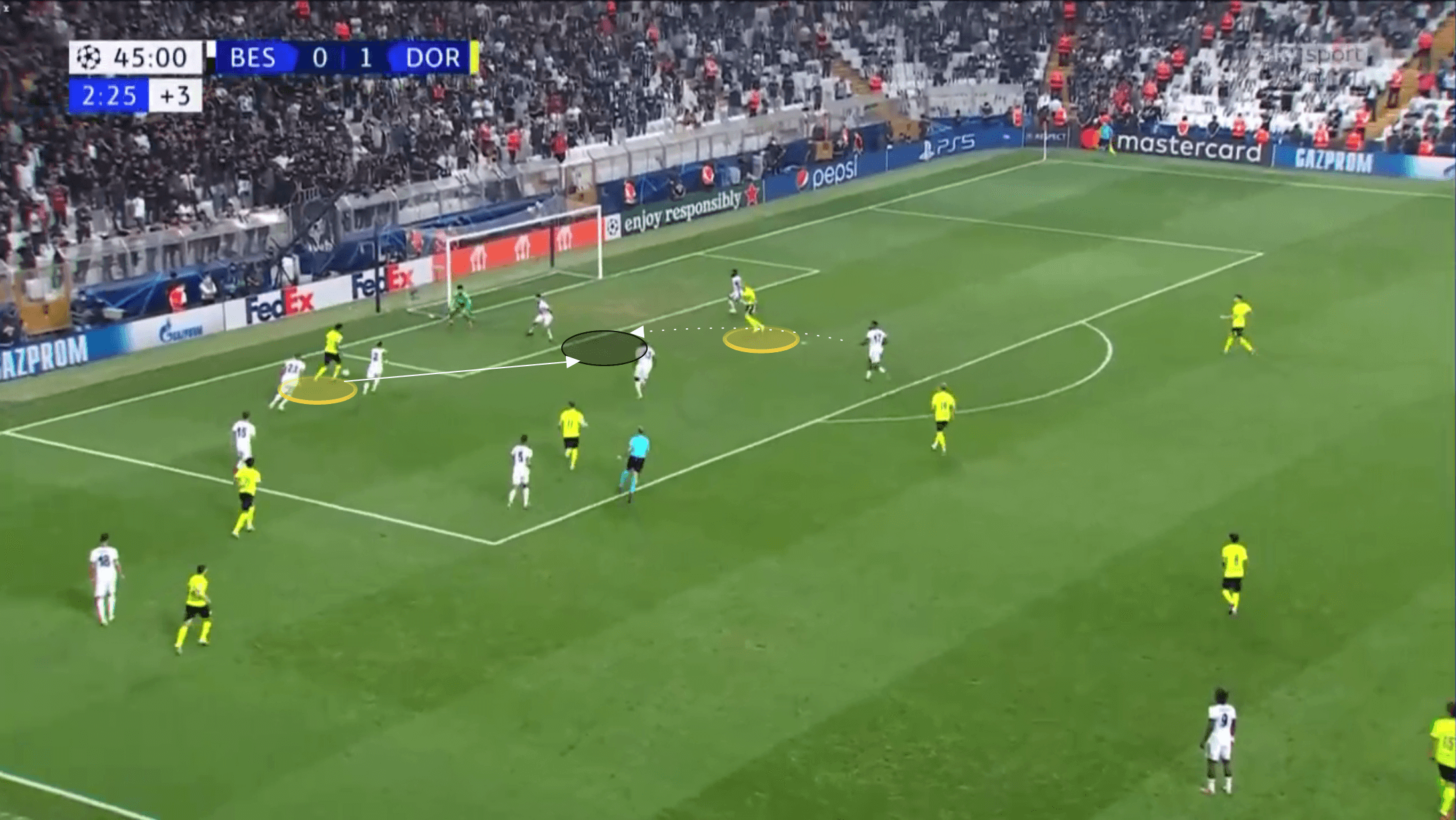
His teammates know to find him in this position and even if opposition defences are expecting it, Haaland makes it difficult for them to stop it from occurring. The reason it is so difficult is that the forward will vary the run he makes. He may make this exact run we have just seen, looping towards the front post, but if he believes the defence are anticipating it then he will run straight through the middle and look to be found with a pass across goal to finish from inside the six-yard box. We can see these two options available for him as he makes his run. The crosser knows to look up just before making the cross and will play the right pass based on Haaland’s initial dart either towards the front post or towards the centre/back-post of the goal.
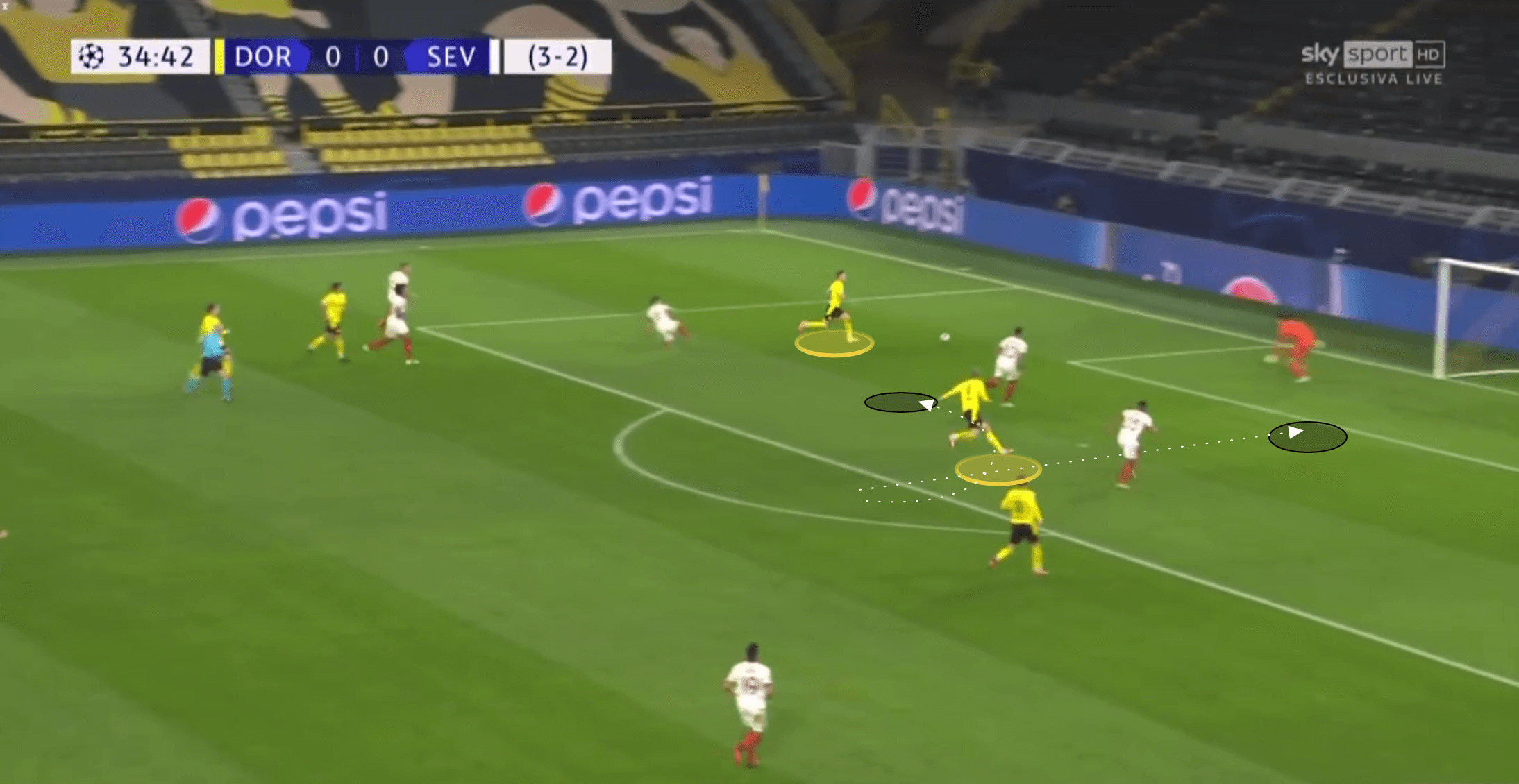
Across goal
And that brings us to the third and final type of cross we will look at, which is that ball played directly across the goal.
The way this cross is played depends entirely on the positioning of the defence and the goalkeeper.
Players are beginning to stand the ball up towards the back post more frequently. This cross is best used when the opposition have plenty of numbers back. However, both the defence and the goalkeeper’s momentum is focused towards the front post area. We can see this occurring in the next image in a game between Belgium and Estonia where De Bruyne recognises there are four Estonia defenders between himself and the front post, whilst the goalkeeper is very far over in his goal. De Bruyne deftly chips it towards the back post, where there is a 2v1 overload on the opposition defender on the back post.
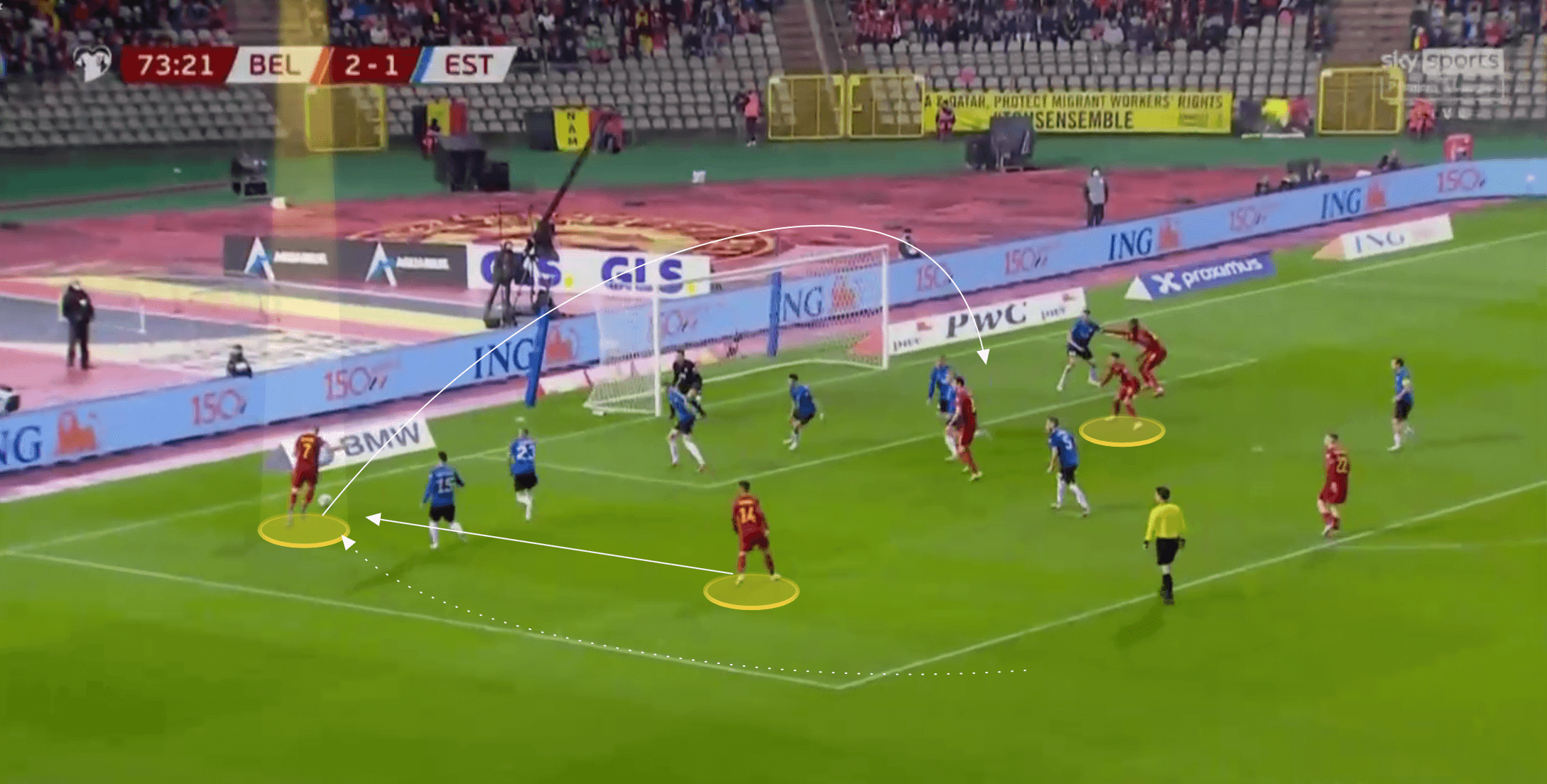
On a quick break with space to attack, this cross is less frequently used, as the fastest way to get the ball across goal is not to lift it in such a way.
Instead, when there is space to attack, the best option is to drill it across goal.
We can see De Bruyne making the same under-lap we saw earlier in the following image. Also, note the high positioning of the opposition defence, meaning De Bruyne had space to immediately hit once on the ball.
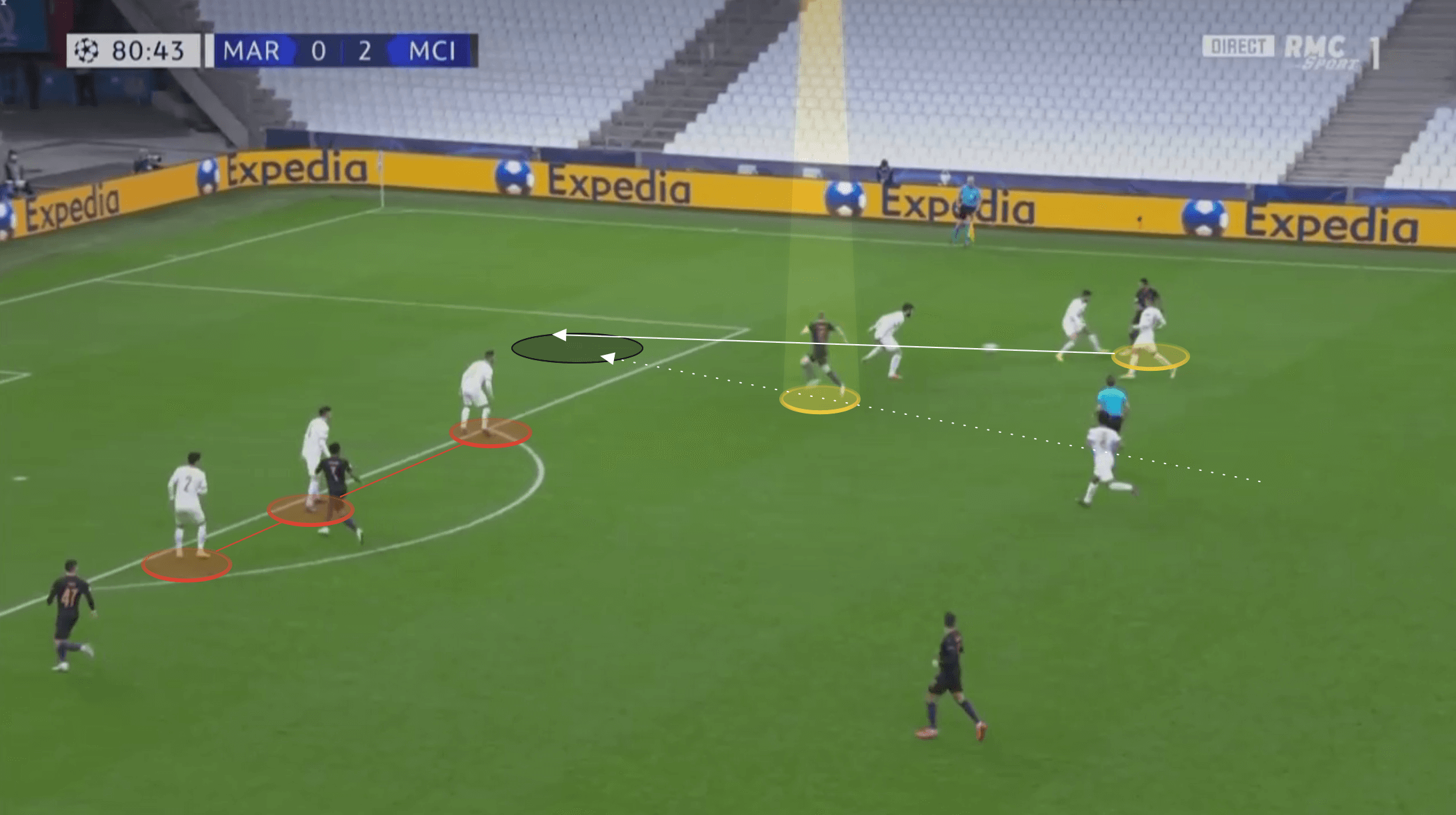
And that he did, setting up City’s third goal in this game by immediately playing the ball across goal for an easy tap-in from close range.
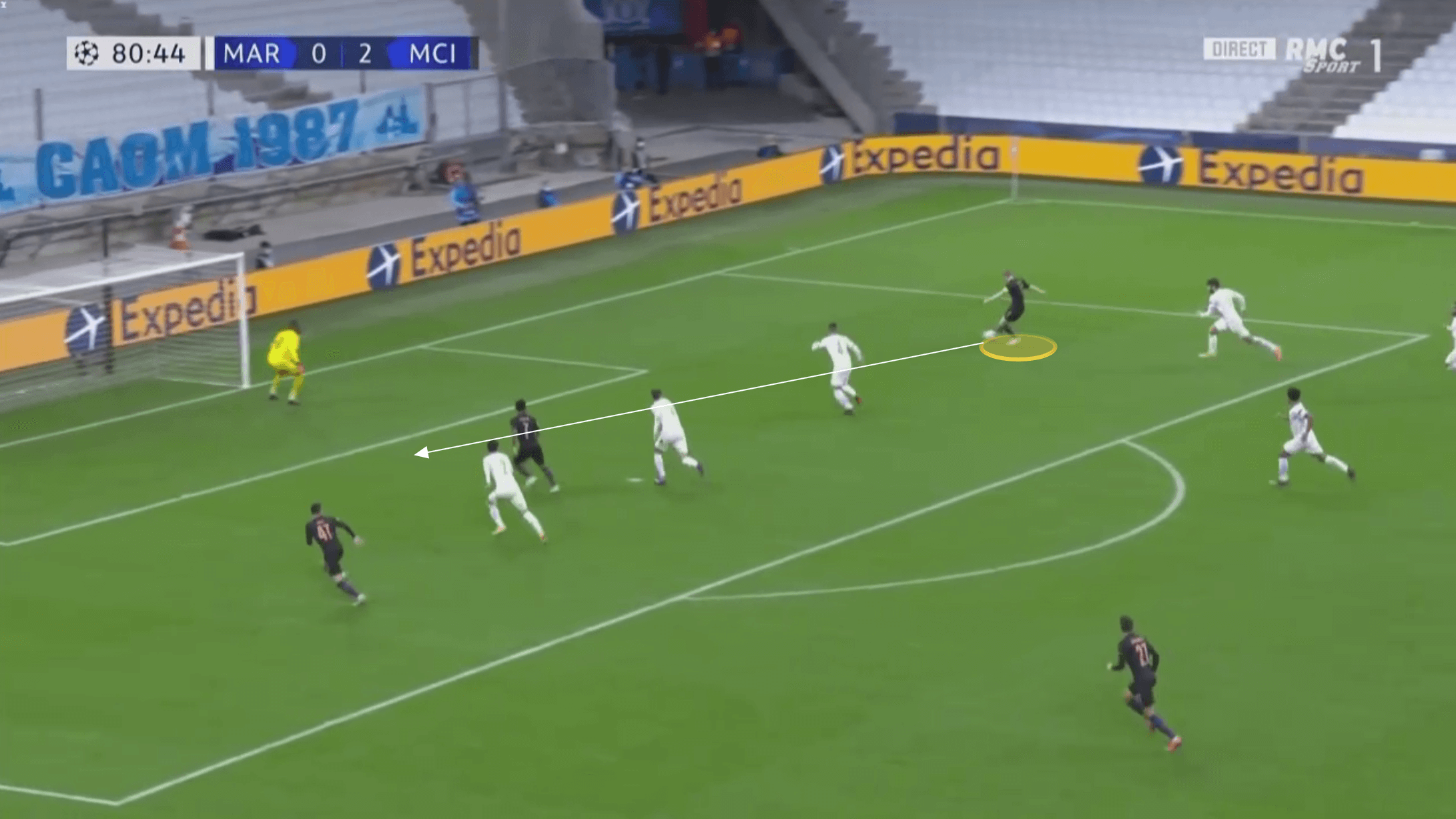
This cross is almost the same as a pull-back but with it generally being hit slightly further away from the byline and, of course, being played in a line across the goal, rather than back at an angle. Nevertheless, it is closely linked to the previously analysed pull-back cross. Where it is at its most effective is when the opposition defence believe they are wise to the pull-back cross and either mark the player hitting the space tightly, or even anticipate this pass by marking the second six-yard box space.
This leaves space in the six-yard box to attack. The next image shows this occurring as Leicester’s defence focuses on preventing Raheem Sterling from receiving in a central position, and this leaves Gabriel Jesus free at the back post to get on the end of the cross.
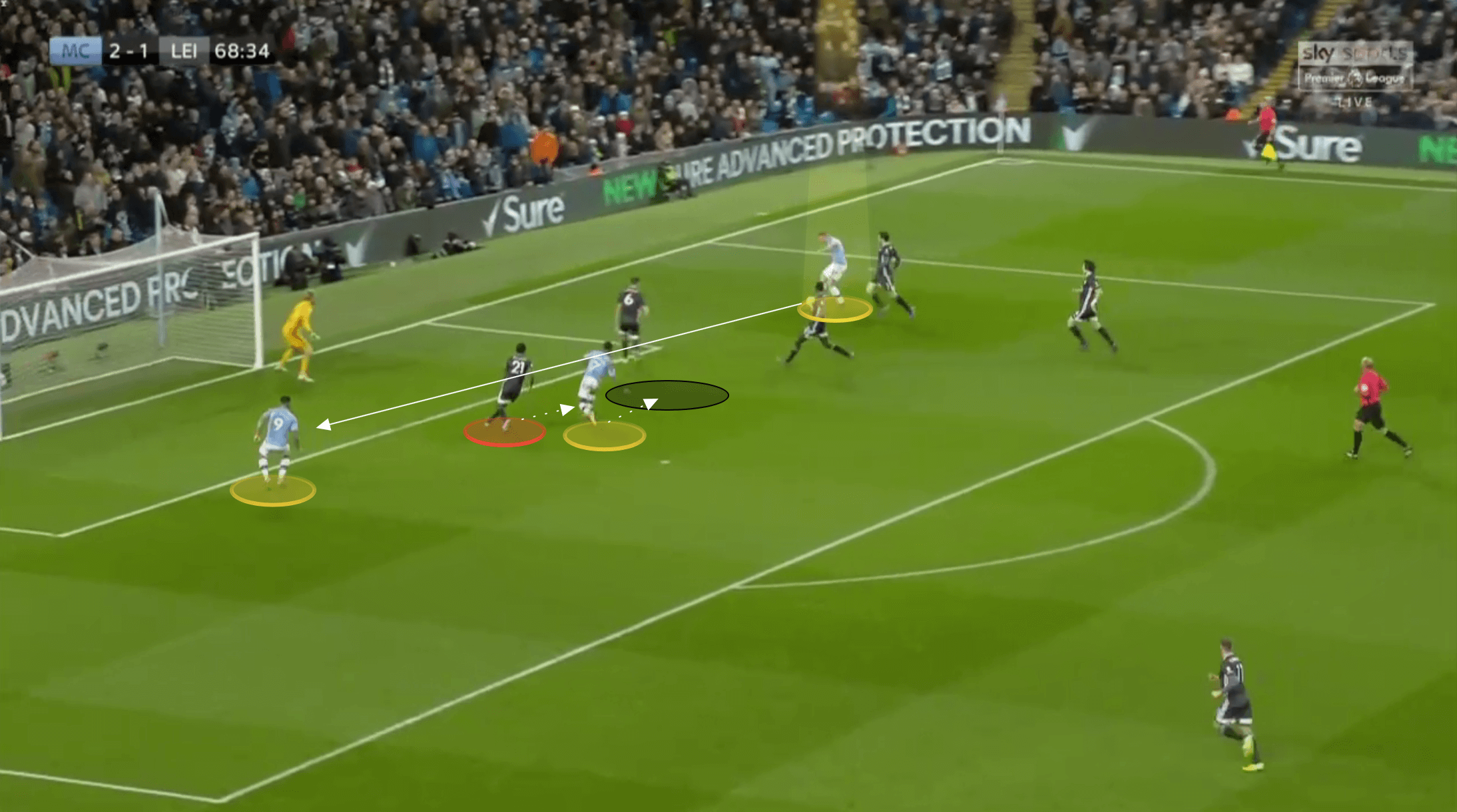
We can see Alexander-Arnold finding a teammate with the same cross in the next image after an overlap down the side of Mo Salah frees him into enough space to hit the ball across goal. We can see Sadio Mane being marked tightly in the centre of the pitch, preventing the pull-back cross, leaving Takumi Minamino open at the back post to be found with the flat pass across the six-yard box.
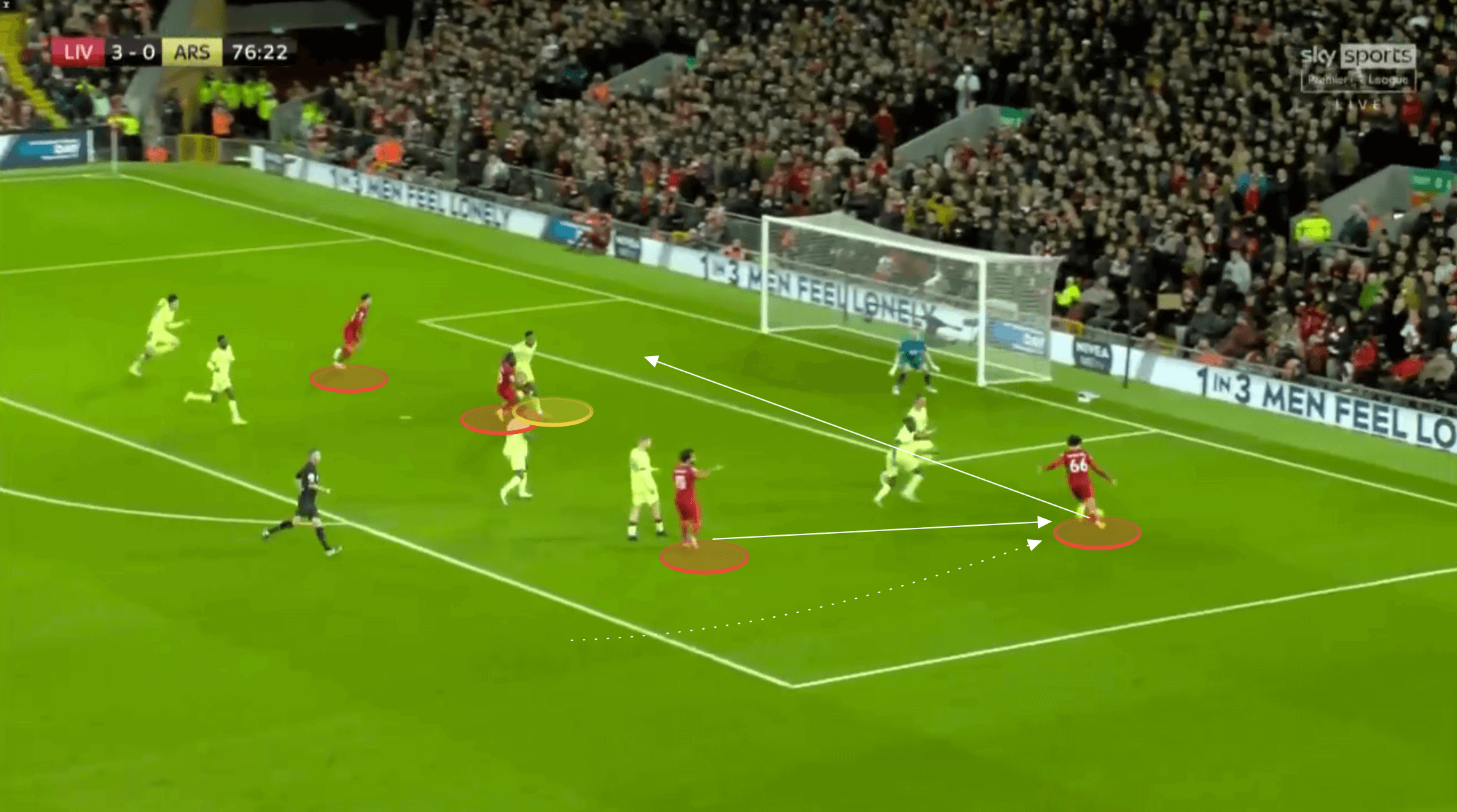
Coaching
There are so many aspects you can focus on with crossing. This article focuses on the actual act of crossing and the areas that are being hit with the delivery. However, the movement of the attacking players goes hand-in-hand with this topic too, as does focusing on the pass out wide. Whole-part-whole is a particularly effective way to structure a session when approaching crossing, as the differences can be so noticeable to the players at the end of the session. But of course, it depends on the age and level of the players you are working with.
Session part 1
This practice can be run unopposed or with a defender tracking back, or even both with the latter as a progression. However, before crosses can be looked at in the context of a match, the players making these deliveries need to be confident they understand which areas they are hitting. The two areas they need to predominantly focus on are the second six-yard box, really going from the penalty spot to the six-yard line, and then potentially another goal towards the edge of the box, perhaps on the penalty spot or between there and the edge of the box. Mini-goals can be placed in these areas.
Players need to understand where to hit the ball and what type of cross when they make a cross from a specific area. A box out wide, as shown in the previous image, as well as coning off a diagonal area towards the front post, gives a good reference point to players on what kind of cross to make. Receiving in the square box, they are likely to want to hit a lower trajectory “whipped” cross into the second six yard-box. Preferably, this can be made off of two touches as De Bruyne did in one of the earlier examples. However, the technique needs to be right before focusing on the speed at which it is played.
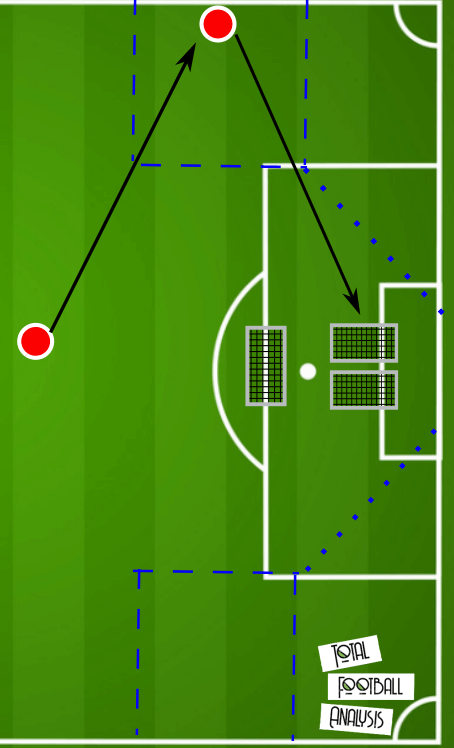
If receiving in the diagonal area, then they may still want to hit the same goal, but they may also want to pull the ball back to the goal towards the edge of the box.
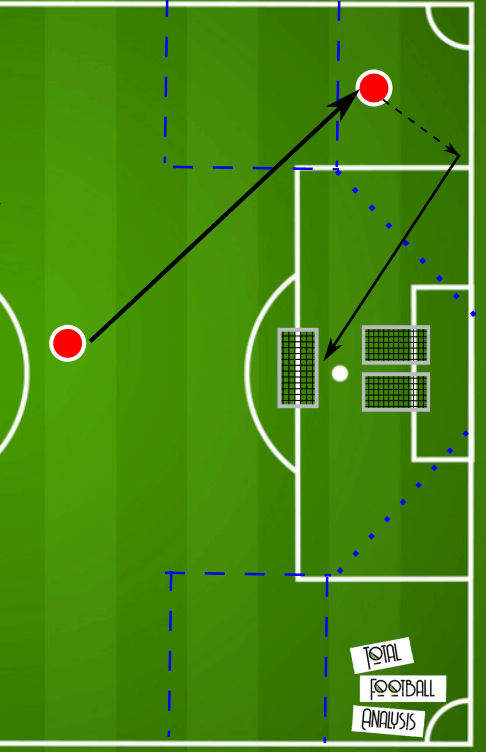
Players should be encouraged to use the full area of this diagonal space, understanding that an aggressive touch taking them towards the front post may make it easier for their pulled back pass to reach their intended target, by reducing the distance their pass has to travel. The crosser can receive the initial pass to feet, as indicated in these images, but a through pass in behind is also realistic.
A defender can be added in who needs to try and cover one of the goals before the crosser can make the delivery. This is best added in after they are regularly hitting the mini-goals where the coaching focus can now be on the speed at which the player makes the cross rather than the technique.
One detail that can be added is the crosser looking to hit the pull-back cross without looking up to do so. The defender will need to make a decision of what goal to cover and, by using their peripheral vision to see which goal the defender is covering, they can instinctively play a pass into the open goal.
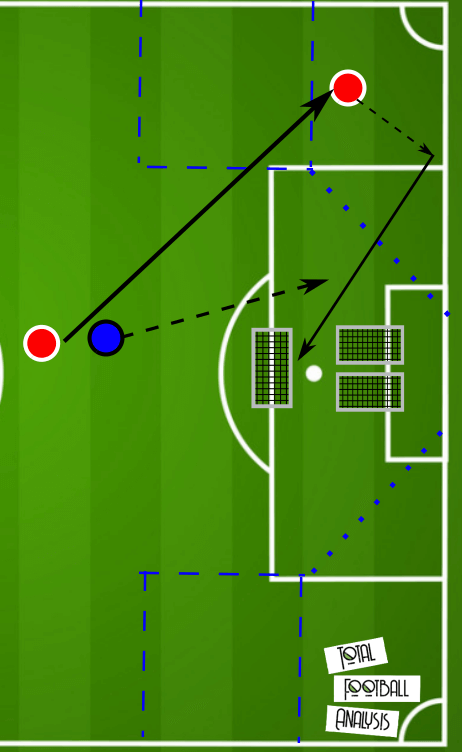
Session part 2
Moving on from this, these crosses can be looked at in practice with smaller numbers, using the full-width of the pitch. It is vital to use the full width when looking at crosses because this is what is relative to the real-game situation.
Two mannequins or big cones (indicated with the yellow markers in the example shown) can be put on the edge of the area to create an offside line to stop the opposition defence from just instantly sitting back. If the opposition midfield sit back and don’t press the in possession side, not making it game-realistic, then it makes sense to give the in possession team a pass count to hit to get a goal on top of looking to hit a cross. However, it is equally important a pass limit isn’t put on the in possession side before they can make the cross – for this takes away any game realism.
The example shown is a 6 v 5 + GK with a defending team having two centre-backs and three midfielders, against a holding midfielder, two central-midfielders ahead of them, a centre-forward, and two wingers, but the numbers can be changed around to suit the session. The attacking team will be rewarded for scoring from a cross by doubling their goals. If the defending team wins possession, they have a time limit, such as eight seconds, to score in one of the three mini-goals, ensuring it feels like a game, but also giving the in possession team as many chances to work on scoring from crosses, and not pressing the opposition for long periods of time after losing the ball.
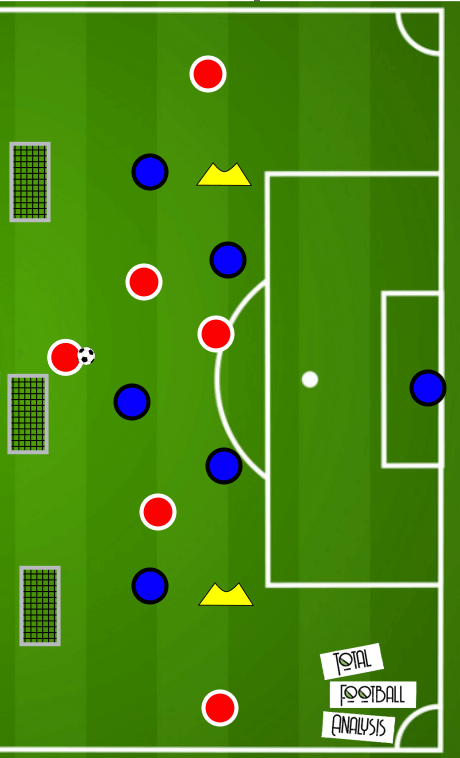
There are patterns that can be looked at in this practice. Firstly, with the wide player drifting deep and wide to receive, before then looking to hit that early cross in behind the opposition defence. They need to be coached to hit this on their second touch if possible, as they practised in the first part of the session. The forward ideally looks to hit the space central or towards the back post whilst the winger on the other side wants to make a late run and to get inside the back post. Attacking crosses either outside the front post or back post makes it highly difficult to score from. Attackers want to be inside the posts wherever possible.
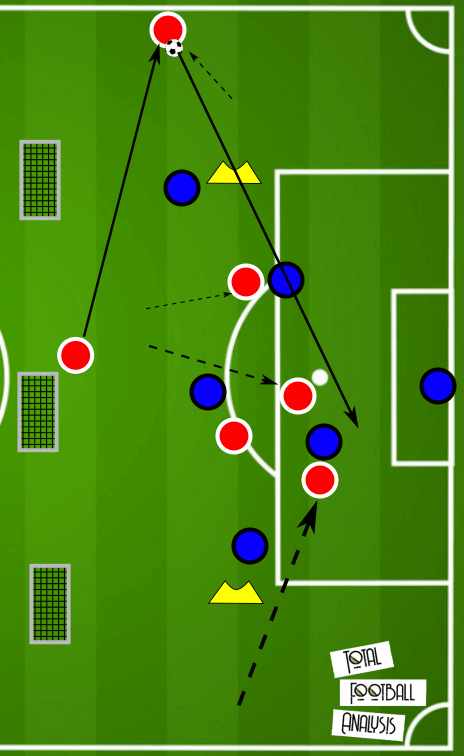
Secondly, the winger could make a run in behind, looking to stay onside before the pass is made of course. Equally, they could receive out wide, draw a player out wide with them, and then slide one of the central-midfielders in behind, as we saw De Bruyne benefit from on several occasions already.
As this pass is made the forward can look to initially make a Haaland-esque run and attack the front post, whilst the winger on the opposite side can again get inside the back post and present an option across goal. We can see the central-midfielder has both options to either pull the ball back across goal or hit the flat pass across the six-yard box as a result.
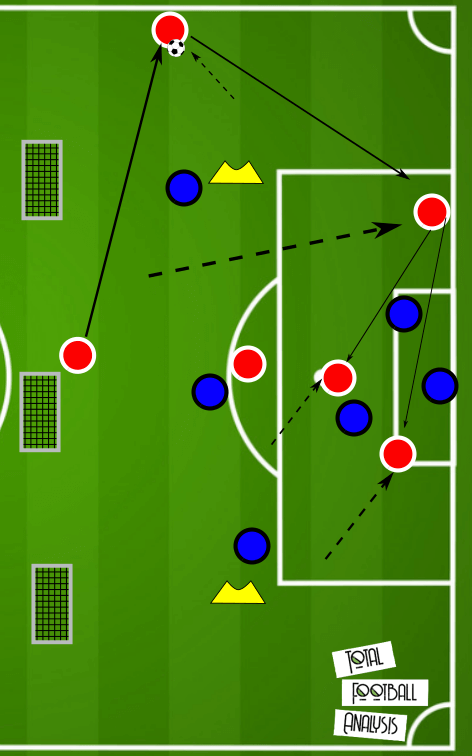
Once the forward has made this Haaland run, they could then focus on making the early run into the six-yard box, particularly if the defenders get wise to these runs and begin to make more interceptions. When they make this early run they will drag the defenders with them and leave space for the central-midfielder on the edge of the box to receive the pull-back cross, which we saw Bernardo Silva benefitting from in an earlier example.
Session part 3
Finally, a game situation is best to see these crosses in action, again rewarding double points for teams scoring from crosses. Offside lines are beneficial to create compactness in midfield which in turn forces the ball out wide more often, whilst also keeping the defences initially high before the cross is made.
The example shown has a 10v10 but 11 v 11 is fine too, although the pitch size may need to be altered. Here the team lines up with four defenders, two central-midfielders, two wingers and a forward. There are wide zones that the full-backs and wingers can move in and out of as they are pleased. No one is locked into any wide zone. However, if they received out wide, only the opposition winger and full-back can step into this zone to defend initially creating a 2v2. The in possession team can commit a third player into this area to create a 3v2 overload and the central-midfielder should be encouraged to do this. In doing so they can receive a pass in behind, as shown in the example, and this should provide plenty of opportunity for crosses to be delivered into the area with the attacking players hitting the box with their runs, hitting the spaces focused on already in the session.
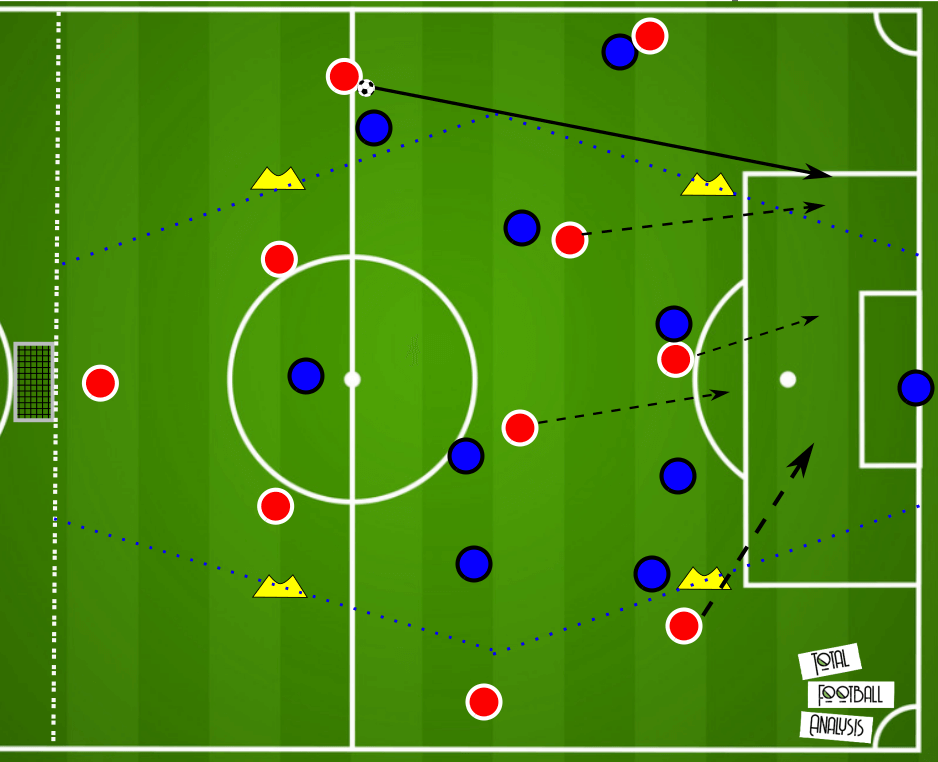
Conclusion
This analysis looked to highlight some of the main ways of crossing into the area and the context where they are best applied. Following that it suggested some ideas for a crossing session that can be replicated or played around with to fulfil a team’s tactics and game model. This session doesn’t need to be copied and pasted into a training session, however, it presents merely some ideas on ways to create these situations in a training session that can hopefully lead to your team gaining success from such moments in the game we saw from Manchester City, Belgium, Liverpool, and Borussia Dortmund.

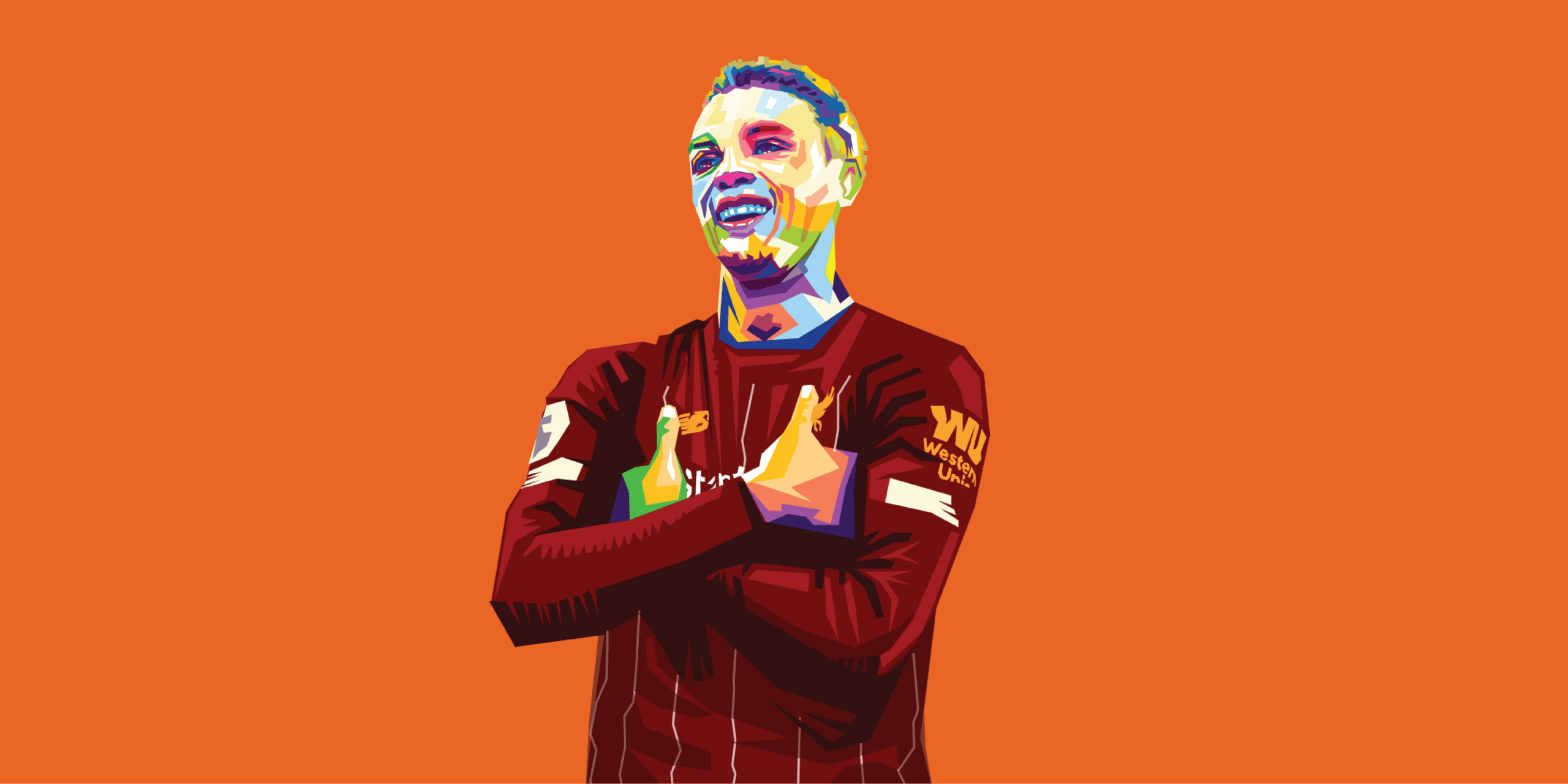



Comments